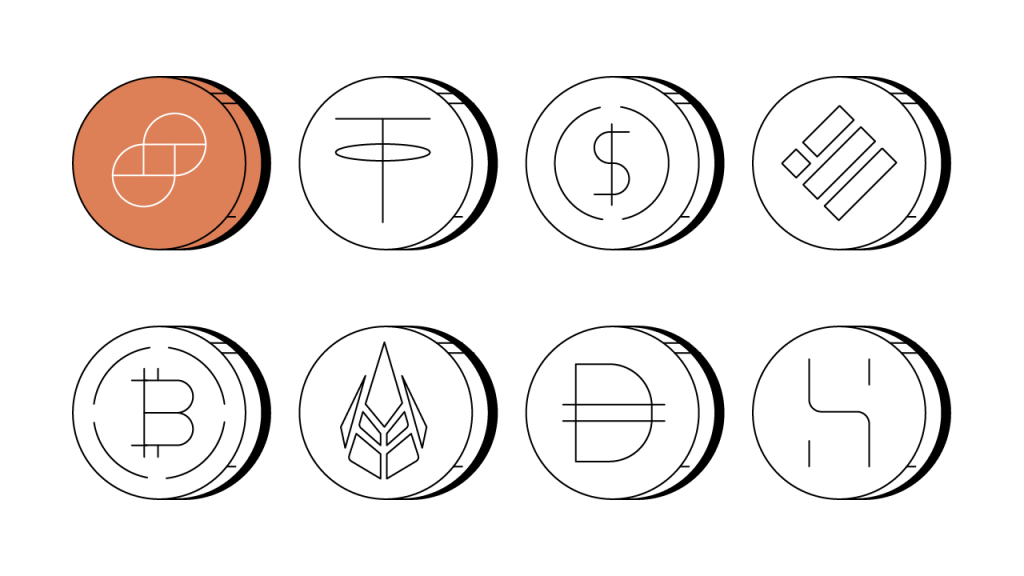Contents
Pros and Cons of Stablecoins: Benefits & Purpose
Explore the pros and cons of stablecoins, including benefits like price stability and DeFi integration, plus key risks like de-pegging and regulatory concerns.

Summary
in the crypto world. Designed to provide the stability of fiat and the efficiency of blockchain, stablecoins are making waves in everything from decentralized finance (DeFi) to cross-border payments. Unlike volatile cryptocurrencies like Bitcoin and Ethereum, stablecoins maintain a consistent value by pegging themselves to external assets, often fiat currencies like the U.S. dollar. This stability makes them an appealing option for crypto newcomers, traders, businesses, and institutions alike. In this article, we’ll explore the , break down their benefits, explain how they work, and help you understand their evolving role in the broader financial ecosystem.
What Are Stablecoins?
designed to maintain a stable value over time. Unlike traditional cryptocurrencies, which can experience wide price swings, stablecoins aim to remain pegged to an underlying reserve asset such as a fiat currency (like USD or EUR), commodities (like gold), or even other cryptocurrencies.
Their primary purpose is to offer a non-volatile medium of exchange within the blockchain ecosystem. This stability allows users to:
Transact in crypto without exposure to extreme price fluctuations.
Store value on-chain securely.
Participate in DeFi with reduced risk.
Bridge traditional and digital finance.
The concept of stablecoins emerged as a solution to the volatility problem in crypto markets. As digital adoption grows, stablecoins are increasingly used for remittances, payroll, lending, savings, and global trade.
Popular examples include:
USDC (USD Coin): Fully backed by U.S. dollar reserves and regularly audited.
USDT (): One of the most widely used stablecoins, pegged to the USD.
DAI: A decentralized, crypto-collateralized stablecoin managed by MakerDAO.
What Are the Main Types of Stablecoins?
Not all stablecoins work the same way. Each type has a different mechanism for maintaining its peg and ensuring price stability.
Here's a breakdown of the most common types:
Fiat-Backed Stablecoins
These are the most common. Each coin is pegged to fiat currency held in reserve. Examples include USDC and USDT, which are reserve backed. Centralized companies typically issue them and offer transparency through audits.
Crypto-Backed Stablecoins
These use other cryptocurrencies (like ETH) as collateral. They're overcollateralized to account for volatility. DAI is a leading example, operating through and decentralized governance.
Algorithmic Stablecoins
These maintain their peg through algorithmic mechanisms that control the supply based on demand. While innovative, algorithmic stablecoins have proven particularly vulnerable to market volatility, as demonstrated by the collapse of TerraUSD, which resulted in significant losses for holders.
Every stablecoin exists with different dynamics of decentralized operations, security measures, and transparency while presenting specific degrees of risk. The analysis of stablecoin technologies should begin with an understanding of their operational method before deciding their utility.
What Are the Pros and Cons of Stablecoins?
Let’s break down the pros and cons of stablecoins to understand whether they’re a fit for your crypto strategy.
Pros of Stablecoins
to people who wish to maintain control over their cryptocurrencies:
Price Stability: As the name suggests, stablecoins maintain a constant value, which provides users with a dependable method for money storage and day-to-day transaction purposes because their prices remain stable.
Fast, Low-Cost Transactions: Stablecoins provide swift and affordable payment processing, which works well for international borderless settlements. These attributes make stablecoins a valuable replacement option for traditional remittance platforms.
24/7 Accessibility: Users can access them at all times throughout the day without requiring assistance from banks and alternative financial institutions. You only need a crypto wallet and an internet connection to start using stablecoins.
DeFi Integration: Stablecoins power various DeFi applications, like lending, yield farming, and liquidity provision. Their predictable value makes them the preferred collateral and unit of account in decentralized finance.
Global Financial Inclusion: For users in unstable economies or underbanked regions, stablecoins offer access to digital dollars without needing a bank account.
Programmability: Smart contracts can use stablecoins to automate payments, escrow arrangements, or subscription services with built-in logic.
Hedging and Risk Management: Traders and investors use stablecoins to temporarily exit volatile positions without returning to fiat.
Thanks to their versatility, stablecoins are becoming an essential tool for both individual users and institutional investors.
Cons of Stablecoins
While the benefits are significant, it's important to recognize the limitations and risks associated with stablecoins:
Centralization and Counterparty Risk: The centralized entities that manage stablecoins maintain total control over their backing reserves. The risk of account freezing and regulatory penalties puts trust-based risks in front of issuers of these digital assets.
Transparency Concerns: The public disclosure transparency of stablecoin issuers faces challenges since some companies did not provide enough proof that valid audits fully back their reserves. A lack of transparency within a system destroys user faith in the platform.
Regulatory Uncertainty: The global regulatory environment continues to evolve, thus creating uncertainties for stablecoin protocols. The stablecoin industry faces limitations because government authorities enforce rules and requirements upon issuers of these coins that subsequently influence user activity.
Smart Contract Vulnerabilities: Stablecoins that depend on cryptocurrency or algorithms have built-in code that remains susceptible to program errors unless it undergoes complete third-party reviews.
De-Pegging Risk: The de-pegging phenomenon occurs in rare situations where stablecoins lose their value relationship due to market disasters or operational breakdowns. There are many incidents where TerraUSD (UST) proved to be one of the most prominent stablecoins in the market until its sudden collapse.
Limited Yield Potential: Unlike more volatile cryptocurrencies, stablecoins typically do not offer potential for capital appreciation. These assets provide security, but they do not present a suitable solution for achieving lasting capital growth.
Stablecoins are a powerful financial tool — but like any tool, they should be used with full awareness of how they work and what could go wrong.
Unlock the future of money on Gemini
Start your crypto journey in minutes on the trusted crypto-native finance platform
What Can Stablecoins Be Used For?
The practical applications for stablecoins span across industries and user types.
Trading Pairs: Crypto exchanges employ USDT along with USDC as their base trading pairs, which users utilize to acquire and surrender different digital assets.
Cross-Border Payments: Stablecoins allow users to make quick, affordable international transfers, which operate more efficiently than SWIFT systems.
Savings and Passive Income: Stablecoins give users the opportunity to generate interest income through deposits at DeFi protocol or centralized facilities without facing volatile market changes.
On-chain Payroll: The on-chain payroll system provides companies and DAOs with a method to pay freelancers or employees through stablecoins, which delivers transparent and automated payroll functions.
Merchant Payments: Some online retailers, along with service providers in the market, allow customers to pay for goods and services through stablecoin transactions.
DeFi Collateral: Stablecoins serve as secure collateral assets in borrowing/lending DeFi platforms such as Aave, Compound, and MakerDAO.
NFT Purchases and Web3 Applications: Users purchase NFTs and access Web3 applications through many digital platforms that accept stablecoins as their transaction currency.
Stablecoins continue to grow in functionality, making them a foundation for blockchain-based finance.
How Do Stablecoins Compare to Other Cryptocurrencies?
The stability of because they serve different functions. Stablecoins don’t offer dramatic appreciation — instead, they provide core functionalities like utility, liquidity, and operational efficiency.
There are some key differences to keep in mind:
Volatility: Stablecoins sustain their value because they differ from regular cryptocurrencies that depend on market sentiment changes for price volatility.
Purpose: Bitcoin functions as a digital currency, while Ethereum operates as the foundation for decentralized apps. Stablecoins provide optimal functionality for payment processing, savings, and trading operations.
Risk Profile: Stablecoins appeal to risk-averse users or those looking to hedge positions.
Speed and Cost: Most stablecoins operate on efficient blockchains with low transaction fees.
Stablecoins are a stabilizing force in the otherwise unpredictable world of crypto, acting as bridges between centralized finance (CeFi) and DeFi.
Gemini and Stablecoins
Gemini offers its own stablecoin, , which is pegged 1:1 to the U.S. dollar and held in FDIC-insured U.S. banks, though GUSD itself is not insured by the FDIC. GUSD is a regulated, transparent, and secure option for users who want a trustworthy digital dollar.
Gemini users can:
Buy, sell, and hold on the Gemini platform.
Use GUSD for trading pairs, saving, and sending digital payments.
Trust that their funds are backed and subject to regular audits, aligning with regulatory standards.
Gemini’s focus on compliance and security makes it a standout option for those exploring stablecoins with peace of mind.
Wrapping Up
Stablecoins unite three essential qualities: price stability, cryptocurrency functionality, and worldwide accessibility. They act as valuable connections that enable users to move between conventional financial systems and decentralized digital currencies for payment management, trading, and operations.
However, they aren’t one-size-fits-all, and it’s important to understand the pros and cons of stablecoins. Stablecoins' advantages need to be evaluated against risks, including centralized operation, regulatory measures, and smart contract faults.
Stablecoins represent a strategic tool that helps crypto enthusiasts to access price-stable tokens for transacting, saving, or hedging within crypto ecosystems.
Ready to explore the benefits of stablecoins? and start using trusted options like GUSD today.

Author
Is this article helpful?
